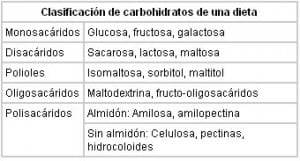
Types of Carbohydrates
The carbohydrates or carbohydrates as you well know are hydrated carbon atoms. There are various types of carbohydrates. Let's meet the main ones.
Monosaccharides: They are the simplest carbohydrates, which are made up of a single molecule. These types of carbohydrates cannot be hydrolyzed to smaller carbohydrates. Its general formula is (CH2O) n. It is important to note that monosaccharides always have a carbonyl group on one of their carbon atoms and hydroxyl groups on the rest.
The Disaccharides They are carbohydrates formed by two monosaccharide molecules, which when hydrolyzed produce two free monosaccharides. These types of carbohydrates have the chemical formula C12H22O11. It is worth reporting that sucrose is the most abundant disaccharide.
The Oligosaccharides They are composed of three to ten monosaccharide molecules, which when hydrolyzed are released. Oligosaccharides are often bound to proteins, forming what are known as glycoproteins.
The Polysaccharides they are chains, branched or not, of more than ten monosaccharides, which are the product of the condensation of several monosaccharide molecules with the loss of several water molecules. Its empirical formula is (C6 H10 O5) n. Its main function within our body is storage.
We can also divide carbohydrates into energy carbohydrates which act as if they were biological fuels and are responsible for providing immediate energy to the cells as well as providing reserve energy to the cells.
The structural carbohydrates are those that form the skeletal structures in a resistant way.
Further information: What are carbohydrates and what are they for?
Photos: Tomas Pascual Institute